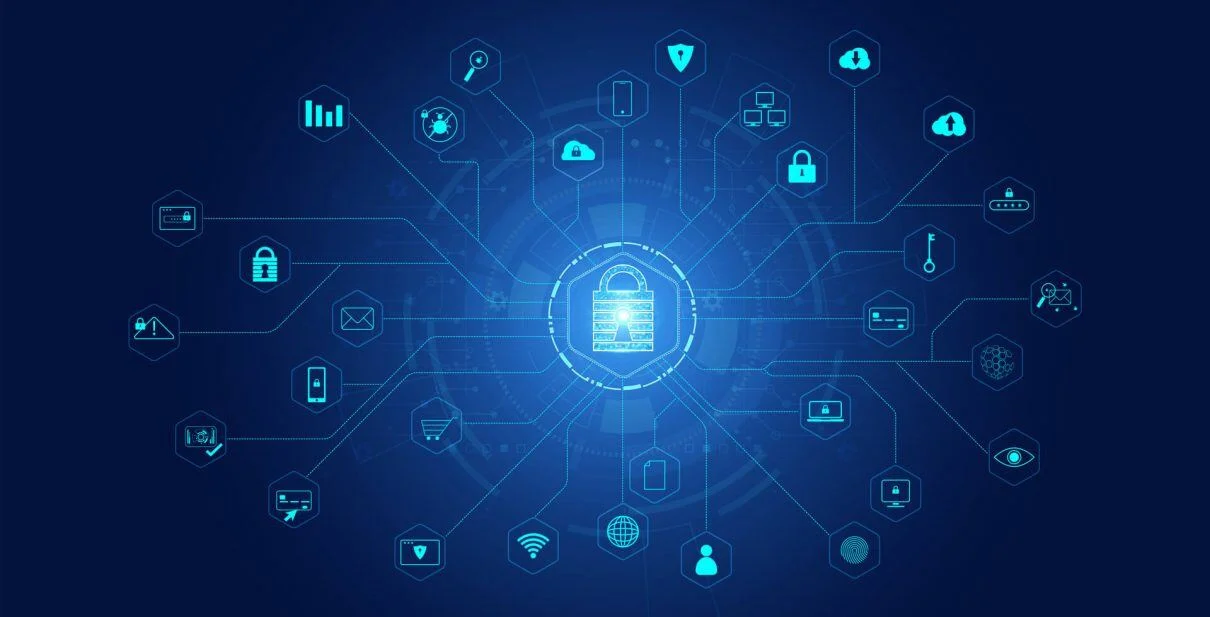Cybersecurity is now full of different views and unclear stories, mainly about Managed Detection and Response (MDR). Many organizations are trying to understand too much information. Often, this information is unclear because people try to present things more positively than reality or use outdated assumptions about what MDR truly offers. Some wrong myths are that MDR always works perfectly or that it’s just traditional security with a new name. The truth is far more nuanced.
As cyber threats continue to evolve, so must our understanding of the technologies designed to counter them. Real-world applications of MDR require a delicate balance of automated tools and expert human insight tailored to fit each organization’s unique security needs. This discussion is intended to cut through the noise, dispel pervasive myths, and highlight the genuine value MDR brings to modern cybersecurity strategies. By partnering with IT Support Nashville experts, you can implement MDR confidently by overcoming myths and ensuring seamless security, threat detection, and response.
In this blog, we will explore the most common MDR myths and the actual reality behind them.
What is MDR?
MDR, or Managed Detection and Response, is a cybersecurity service. It uses advanced technology and skilled people to find, study, and stop cyber threats in real-time. It goes beyond basic security measures by proactively searching for potential threats and rapidly responding to incidents. This service is designed to provide continuous protection, ensuring your organization stays ahead of evolving cyber risks. Key aspects of MDR include:
● 24/7 monitoring of network and endpoint activities.
● Proactive threat hunting combined with automated detection.
● Fast, effective incident response to minimize damage.
MDR offers a robust, all-encompassing defense against cyberattacks by leveraging technology and expertise.
10 Common Myths about MDR and the Reality Behind Them
Myth 1: MDR Is Just Another Name For Traditional Managed Security Services
The Reality: MDR is not merely a repackaging of traditional managed security services. Regular services usually watch for problems and send alerts. But MDR adds searching for hidden threats, quickly fixing problems, and constantly checking what’s happening. This proactive approach ensures that threats are identified and effectively neutralized before they can escalate.
MDR uses cutting-edge technology and skilled people to watch over things. This gives strong security that older services can’t give on their own, resulting in a more dynamic and comprehensive defense against emerging cyber threats.
Myth 2: MDR Is Only For Large Enterprises
The Reality: MDR is a scalable solution that benefits organizations of all sizes, not just large enterprises. Although big corporations often have more extensive IT infrastructures, smaller businesses are equally vulnerable to cyberattacks. MDR provides cost-effective, tailored security that fits the unique needs of small and medium-sized enterprises.
Using advanced tools and skilled review, MDR helps these organizations by always watching and quickly fixing problems. They may have trouble doing this themselves. This flexibility ensures comprehensive protection regardless of business size.
Myth 3: MDR’s AI Replaces Human Intelligence Completely
The Reality: While artificial intelligence plays a crucial role in MDR by processing large volumes of data and flagging anomalies, it does not replace human intelligence. Instead, AI and machine learning work in tandem with cybersecurity experts who analyze contextual information, validate alerts and make informed decisions.
This hybrid approach leverages the speed of automated systems and the nuanced understanding of experienced professionals. Human oversight remains indispensable in adapting strategies, interpreting complex threats, and refining responses, ensuring that MDR remains agile and effective against sophisticated cyber attacks.
Myth 4: MDR Is Too Expensive
The Reality: Though MDR services come with a cost, they are generally more cost-effective than building and maintaining an in-house Security Operations Center. Organizations can access expert cybersecurity talent and state-of-the-art technologies at a predictable subscription fee by opting for MDR. This investment often pays off by preventing costly data breaches and minimizing downtime.
Additionally, the efficiency and scalability of MDR make it a financially sound choice for businesses of all sizes, offering significant returns in risk mitigation and overall cybersecurity posture without the burden of substantial upfront costs.
Myth 5: MDR Does Not Help With Compliance
The Reality: MDR solutions significantly aid in meeting regulatory compliance requirements. They offer continuous monitoring, detailed log collection, and comprehensive incident documentation aligning with GDPR, HIPAA, and PCI-DSS standards.
By automatically maintaining records of security events and responses, MDR simplifies the auditing process and reduces the administrative burden on organizations. This built-in support for compliance helps avoid regulatory fines and enhances overall data governance and security practices, ensuring that organizations meet internal and external regulatory obligations efficiently.
Myth 6: MDR Is A “Set And Forget” Solution
The Reality: MDR is far from a one-time, set-and-forget solution. It requires ongoing collaboration, regular updates, and continuous monitoring to adapt to the evolving threat landscape. Cybersecurity is an ever-changing field, and effective MDR implementation means constantly refining threat intelligence and response strategies.
Providers work closely with organizations to adjust configurations, update security protocols, and ensure that defenses remain effective. This dynamic relationship ensures that MDR services evolve with emerging threats and offer robust protection over time.
Myth 7: MDR Automatically Fixes Misconfigurations Without Integration
The Reality: MDR systems are designed to detect misconfigurations and potential vulnerabilities but do not automatically resolve these issues without proper integration. Effective remediation still requires coordinated efforts between MDR providers and an organization’s IT team. Integration with existing infrastructure is crucial for translating alerts into actionable fixes.
MDR tools identify problems and recommend adjustments, while human intervention ensures that any remediation aligns with the overall IT strategy. This collaborative process is essential for maintaining a secure, well-configured environment that minimizes exposure to cyber risks.
Myth 8: MDR Eliminates The Need For Other Cybersecurity Solutions
The Reality: MDR is an integral part of a layered cybersecurity strategy, not a replacement for other essential tools like firewalls, antivirus software, or endpoint protection. Each component of a security ecosystem addresses different vulnerabilities and threats. MDR complements these solutions by providing continuous monitoring, advanced threat detection, and rapid incident response.
This multi-faceted approach ensures that even if one layer is breached, additional defenses are in place to detect and mitigate the threat. Therefore, a comprehensive cybersecurity posture relies on integrating MDR with other protective measures for optimal defense.
Myth 9: MDR Guarantees 100% Security
The Reality: No cybersecurity solution can offer absolute protection, and MDR is no exception. While MDR significantly enhances an organization’s ability to detect and respond to threats swiftly, it cannot completely eliminate the risk of a breach. Cyber threats are continuously evolving, and new vulnerabilities can emerge.
MDR minimizes risk and reduces the impact of incidents through rapid response and thorough analysis, but it should be seen as part of a broader, layered security strategy. Organizations must combine MDR with proactive policies, regular updates, and employee training to achieve the best possible protection.
Myth 10: MDR Takes Too Long To Implement
The Reality: MDR providers have refined their onboarding processes to ensure quick and efficient implementation. In many cases, an MDR solution can be deployed in weeks rather than months without causing significant disruption to your existing IT environment.
Rapid integration means that continuous monitoring and threat detection can begin almost immediately, allowing organizations to benefit from enhanced security as soon as possible. This swift deployment is essential in today’s fast-paced cyber landscape, where minimizing vulnerability windows is critical for maintaining a secure operation.
In Conclusion
While numerous myths surround MDR, the reality is that it provides a proactive, scalable, and cost-effective approach to cybersecurity. MDR combines advanced technologies with human expertise to offer comprehensive threat detection, rapid incident response, and robust compliance support. By debunking these misconceptions, organizations can better appreciate how MDR integrates with existing security measures to create a dynamic defense strategy that protects against external and internal threats in today’s evolving cyber landscape. For seamless MDR adoption, consult the Managed IT Services Nashville team.
Keep an eye for more latest news & updates on Get Pro Magazine!








